Chargement...
Chargement...
This joystick enables guidewire translation, rotation and both simultaneously. Two speeds are available.
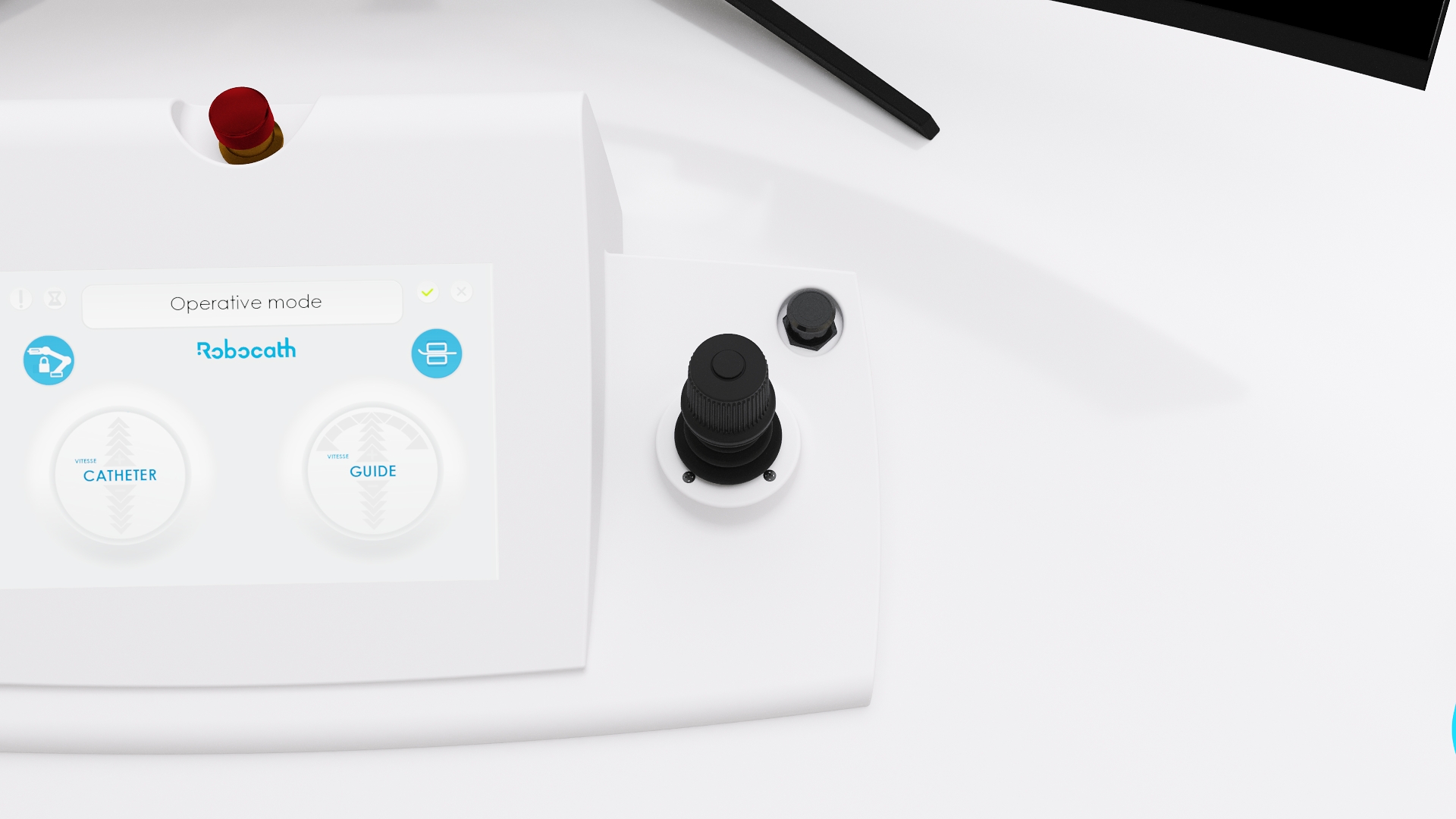
This joystick enables translation of the balloon/stent catheter. Two speeds are available.
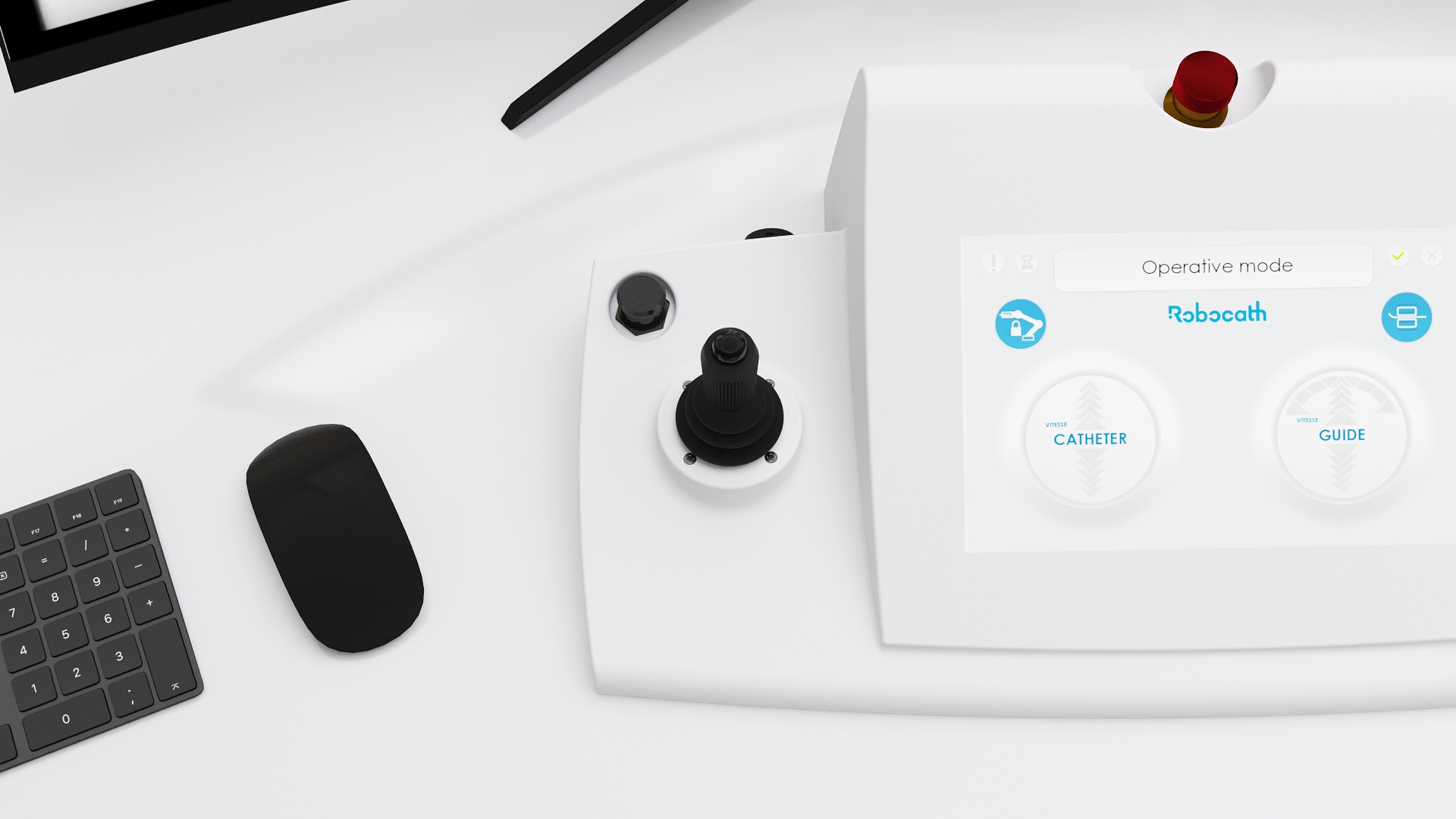
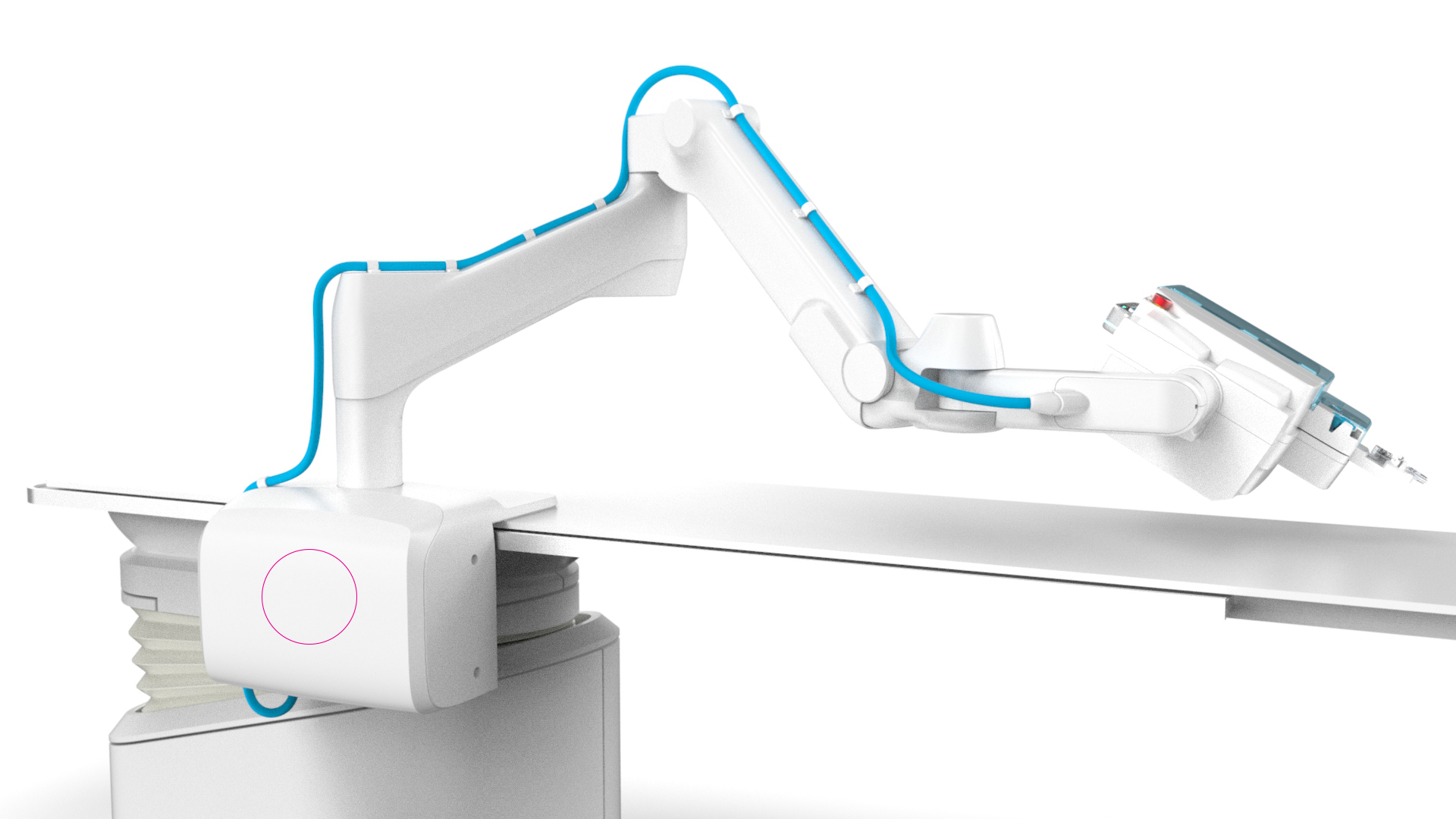
To come back at any time in manual procedure.
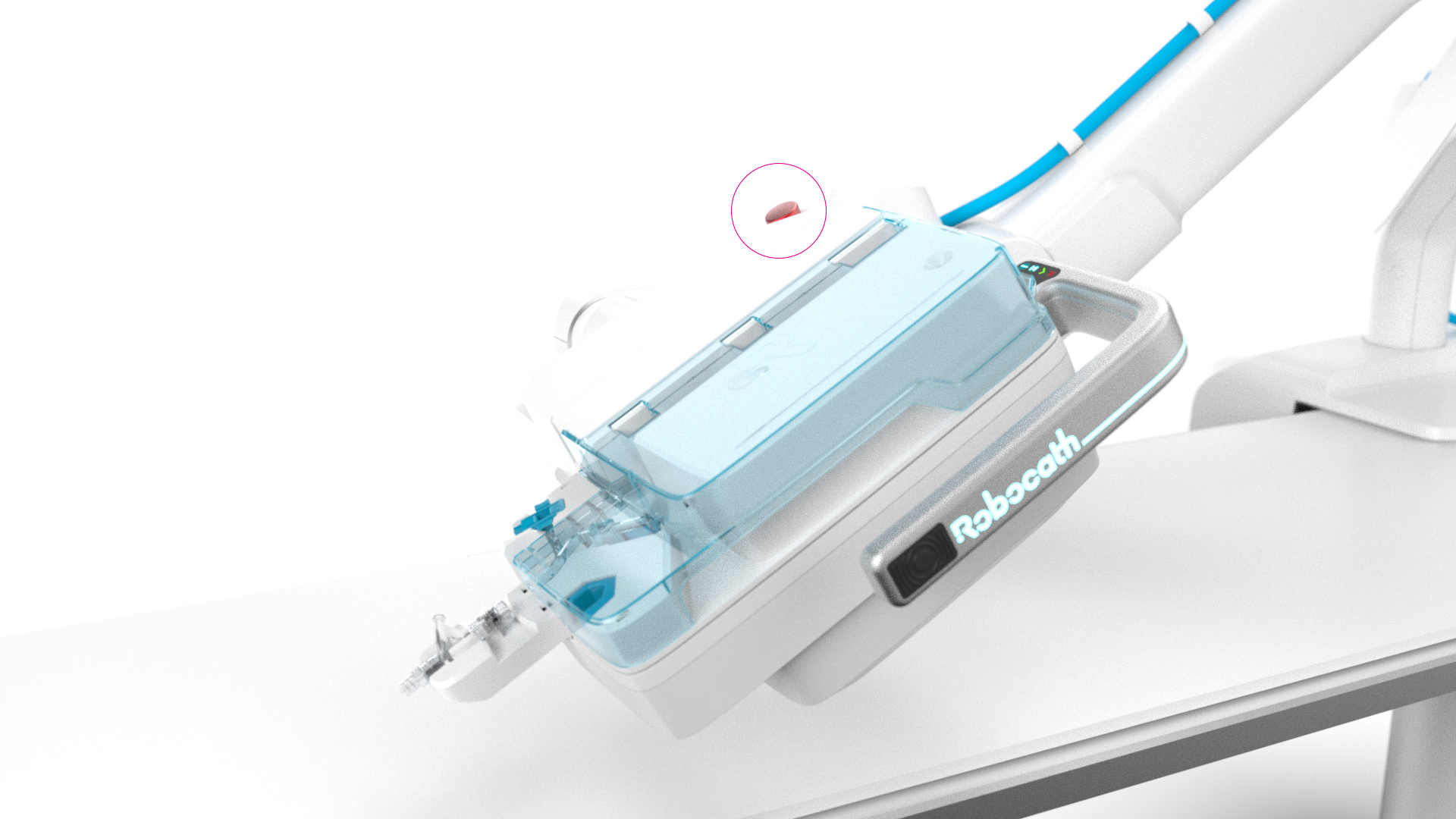
This function secures the guidewire position during the procedure and enable to maintain the guidewire always in place.
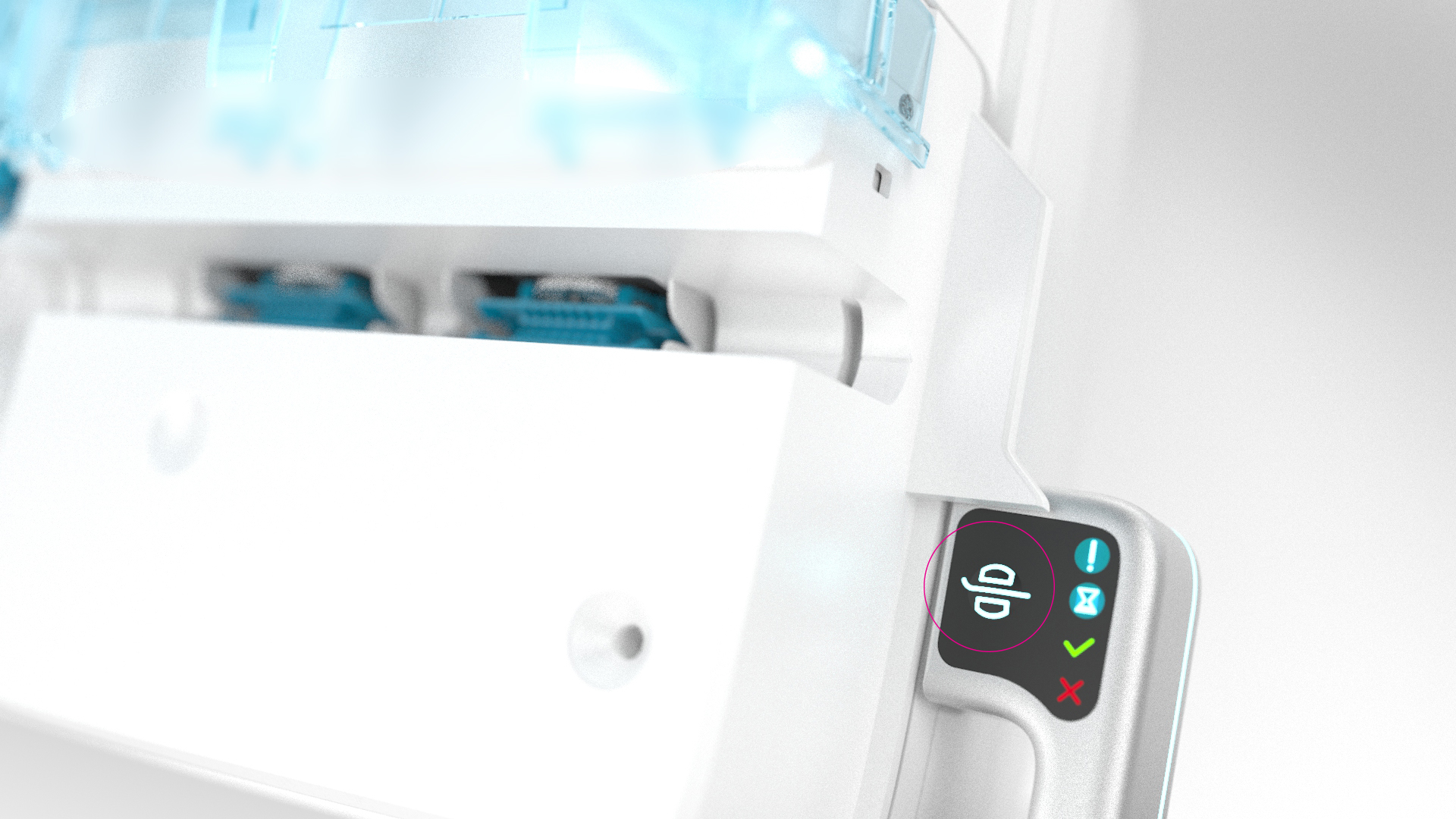
Sterile clipped system for each procedure (disposable).
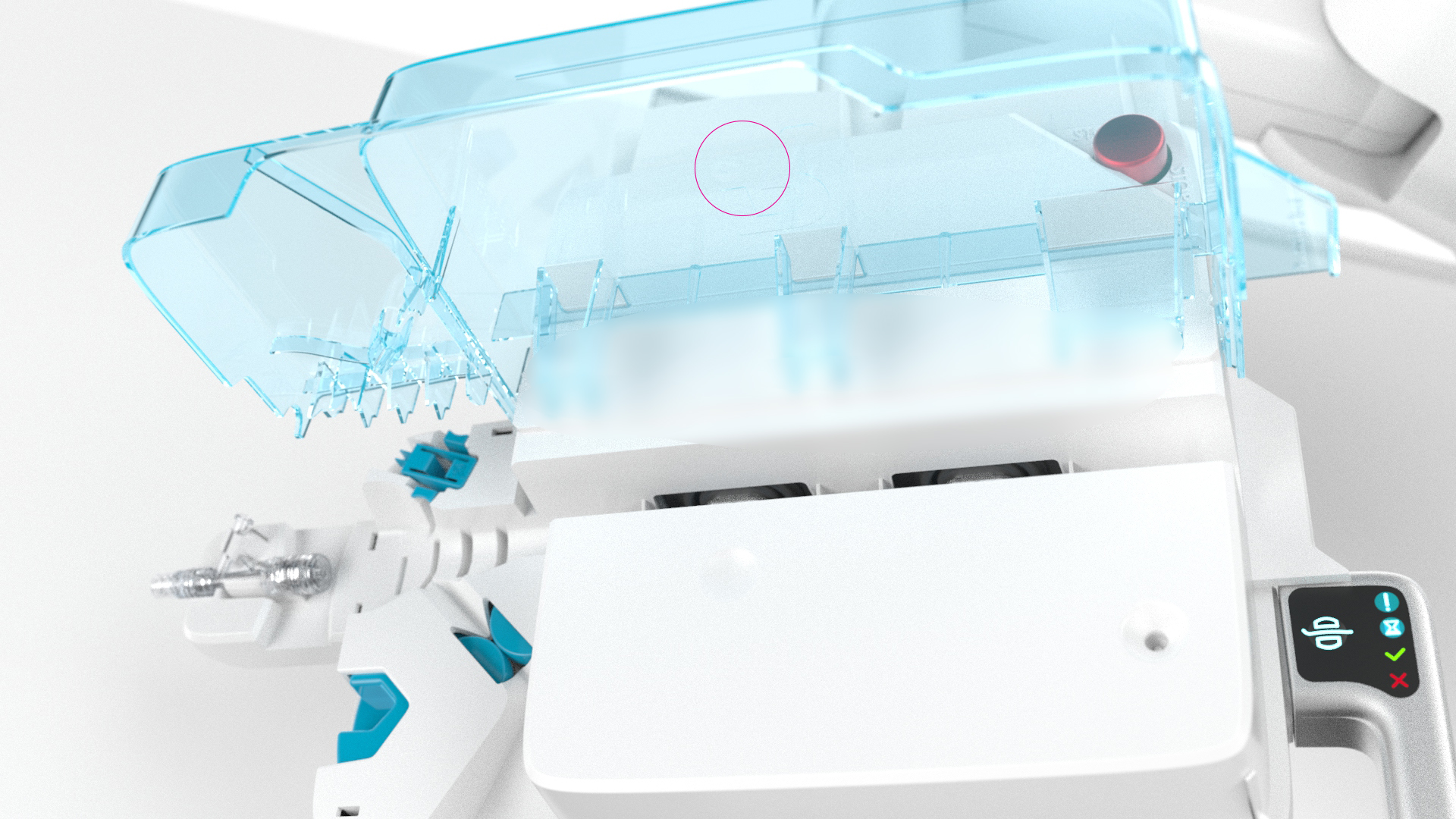
This function allows robotic arm movements and enable the cardiologist to place the robot in the perfect position before the procedure.
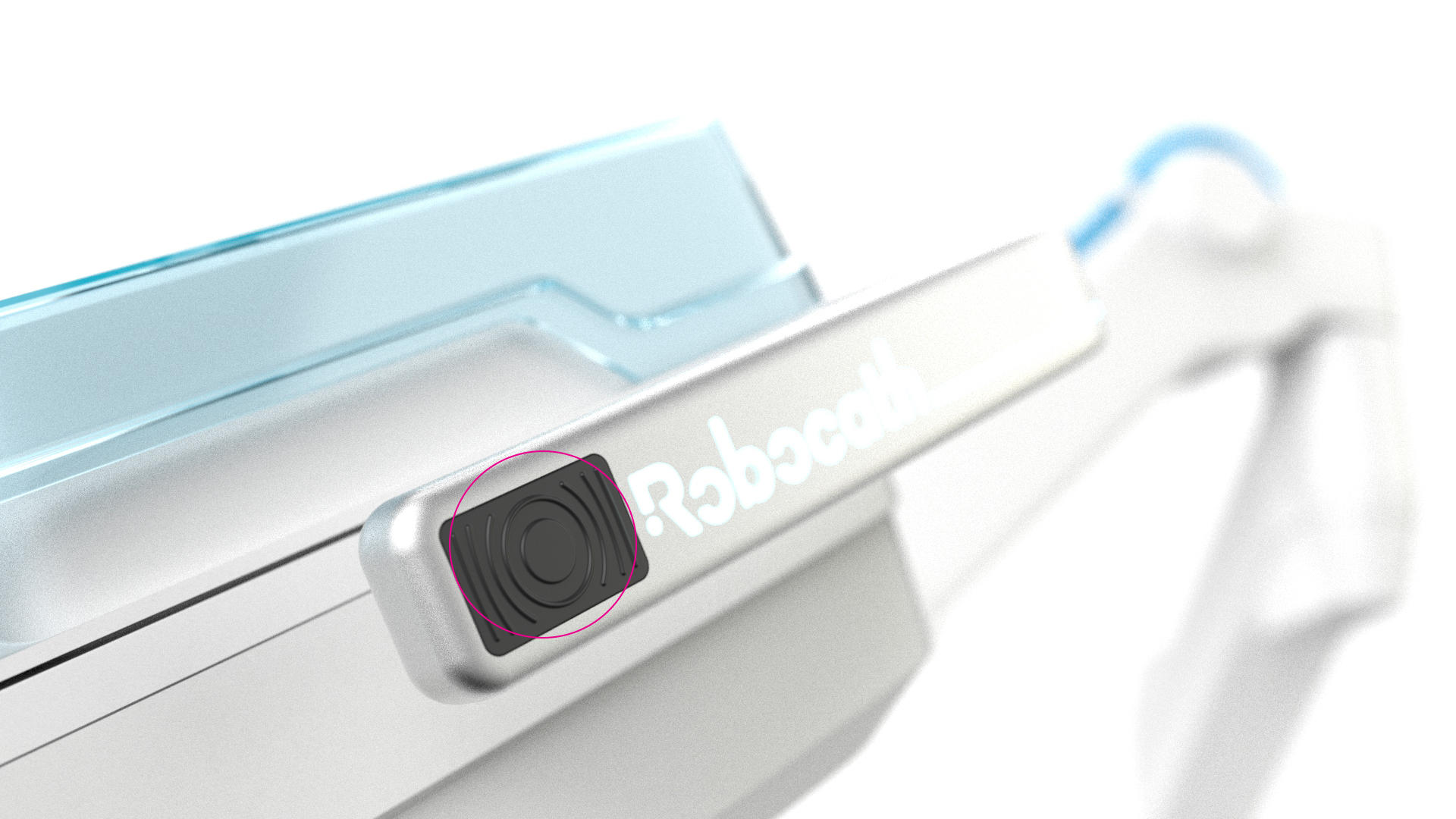
(1) This path is dedicated to the guidewire. It allows translation and rotation movements simultaneously and enable to always keep in place the guidewire. It is compatible with market leading guidewires. (2) This path is dedicated to the stent/balloon catheter. It allows translation movements. It is compatible with market leading stent/balloon catheters.
(3) This function enables to put guidewires and stent/balloon catheters on hold.
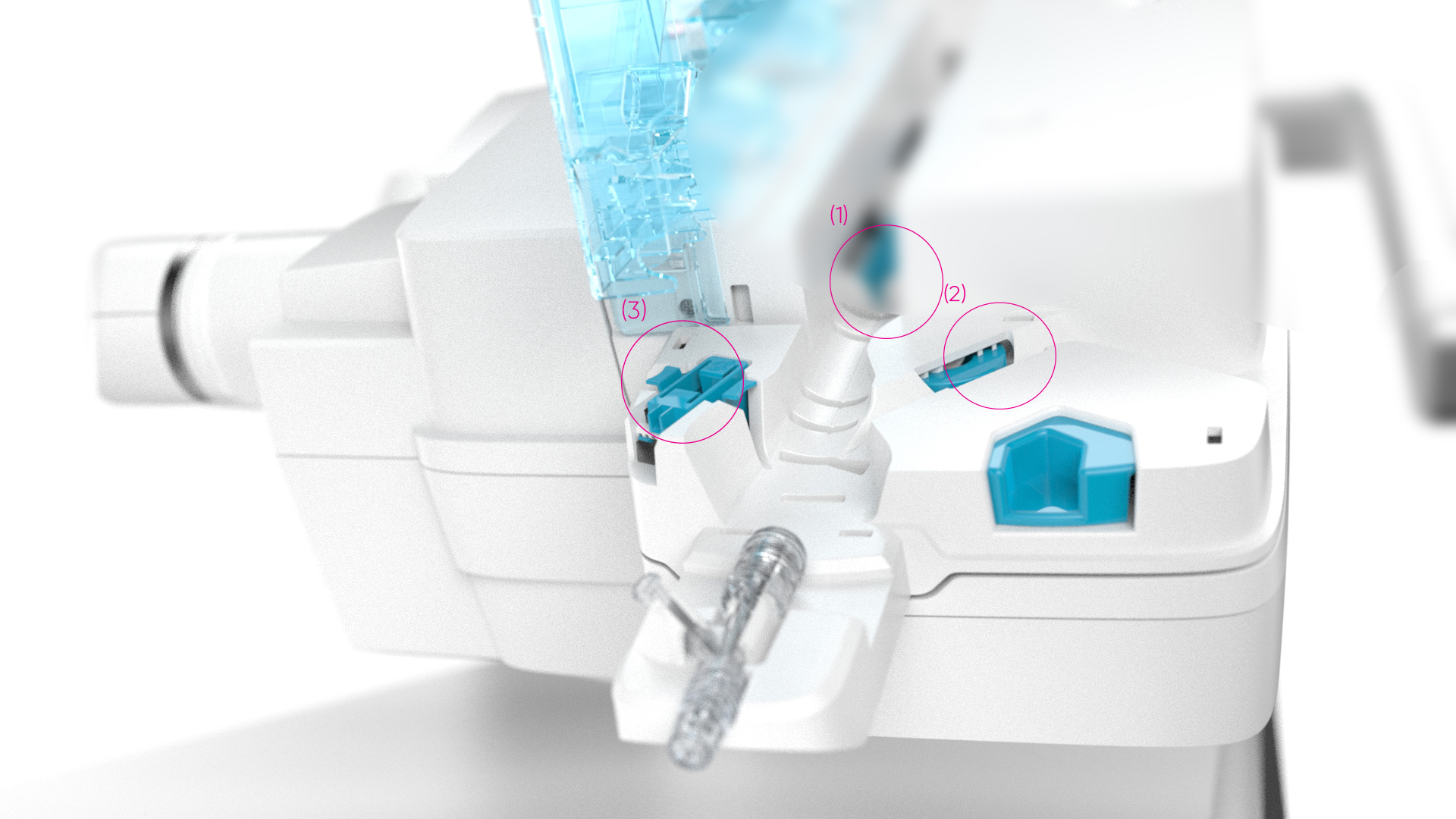
The Robocath team is committed to provide physicians and their teams with the support they need to guarantee optimal use of our medical robot. R-One™ robotic platform is the result of years of scientific collaboration between highly experienced phyisicians and the Robocath engineers who developed R-One™. Consequently, this relationship is built on trust; ongoing communication is very important to us. We are committed to providing training, monitoring and ongoing support to guarantee the proficiency of the whole medical team in using our system.
Safety Information of R-One is available through the link below.
Innovation is at the heart of Robocath’s strategy. New patents are regularly filed for new technologies that will be used in future medical specialties. Robocath’s aim is to guarantee the same access to treatment for all through the development of remote interventions, including the remote treatment of vascular emergencies such as strokes. This model will provide better care for this type of pathology, more quickly and under better conditions. Research is currently underway to develop robotics platforms for peripheral vascular and neurovascular procedures. If you would like to join Robocath on this adventure and participate in this work, contact us now.